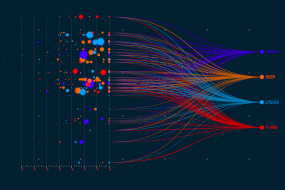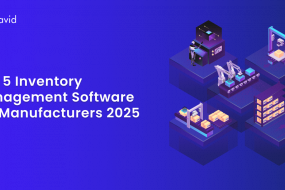
The success of software application development heavily relies on creating an optimal production environment. A well-designed production environment allows developers to work efficiently and produce high-quality code that meets project requirements. However, creating such an environment can be challenging, especially for new developers or teams. This blog will explore the best practices for creating an optimal production environment for software application development.
What is Production Environment in Software Applications
A production environment refers to the live version of a software application that end users use. It contains the final, approved version of the application and all its data. Production environments are critical for software solutions because they experience real-world use and must meet essential requirements for stability, reliability, scalability, security, and performance.
Some essential characteristics of production environments include:
- High availability: The application and associated services/infrastructure must be continuously available and accessible to authorized users. Downtime is unacceptable.
- Robustness: The environment must be robust enough to withstand the demands of real-world usage without failures, outages, or degraded performance. It must efficiently handle heavy loads, many concurrent users, and high throughput.
- Scalability: The environment must scale seamlessly up and down as needed to support fluctuations in usage. It should scale vertically (increasing resources) and horizontally (adding additional servers) to meet demands.
- Consistency: Data, configurations, and software code releases must be consistent across the entire environment. Outdated or improper components can compromise security, integrity, or user experience.
- Security: Strong access controls, encryption, monitoring, and other security practices must be enforced across the environment. Only authorized personnel should have access to make approved changes.
- Integrity: The environment must maintain the integrity of data, configurations, and code. Proper version controls, testing procedures, and release management practices help prevent corruption from improper changes.
- Stability: The environment should remain stable once deployed, only changing in a controlled, tested manner. Frequent changes can introduce new issues, disrupt users or impact productivity.
- Recoverability: The environment must be designed to facilitate the continuation of critical functions even after failures or disasters. Recovering data, software, and operations is essential for minimizing disruption.
Factors to consider when creating an optimal production environment
Several critical factors influence the ability of a production environment to meet essential requirements and support business success. Careful consideration of hardware, software, security, and scalability helps establish a solid, optimized foundation for mission-critical systems and data. These factors affect the production environment as follows-
Hardware
The hardware infrastructure supporting a production environment must have the resources to handle demanding workloads efficiently and robustly. Components like CPU, memory, storage, and networking equipment should be robust, high-performance, and redundant to minimize downtime risks. Options for scaling vertically (adding more resources) and horizontally (adding more servers) are essential for handling load fluctuations.
Affordable yet powerful components should provide enough headroom/overcapacity for future growth without high costs. Redundancy ensures continuity even if parts fail. Load balancers distribute traffic across servers. Fast, low-latency networking minimizes lag. Options for containing workloads to specific regions/availability zones facilitate disaster recovery practices. The right balance of local storage versus object/block storage meets performance and cost needs.
Software
Reliable, secure, and scalable software is required to run the production environment and application(s) housed within it. Operating systems, web/application servers, databases, and other middleware must be robust, optimized for high availability, and handle demanding workloads. Easy configuration and management, as well as options for clustering multiple servers, boost stability.
Version control, testing procedures, and change management help control software releases with minimal disruption. Solutions for containerizing and orchestrating applications improve portability, interoperability, efficiency, and scalability. Monitoring all software components provides visibility and ensures responsiveness to issues. Integrations with monitoring, management, and security tools streamline tasks.
Security
Robust security practices and technologies are essential to protect production environments and sensitive data/systems. Access should be strictly controlled with multi-factor authentication, firewalls, encryption, and more. Monitoring looks for threats like unauthorized access, malware, or DDoS attacks. Tools provide visibility into network topology, vulnerabilities, configuration issues, and abnormal activities.
Isolated networks (DMZ) and private pre-production environments reduce risks. Encryption at rest and in transit prevents unauthorized data access. Privileged access management limits exposure to high-risk activities. Automated responses help contain threats when detected. Security is tested regularly to identify/address vulnerabilities before they become real-world issues. Policies, team training, and risk management cultivate a culture of security-focused best practices.
Scalability
The ability to scale a production environment up and down as demand fluctuates is crucial for optimal performance, cost control, and growth. Vertical scaling increases resources (CPU, memory, storage), while horizontal scaling adds more servers. Both approaches should be options to suit different needs.
Scalability requires infrastructure that supports scaling components and networking that facilitates distributed, replicated, and load-balanced architectures. Software and configurations must be designed to scale simply by deploying additional instances. Management tools provide visibility and control to perform manual or automated scaling operations without disruption.
Tips for optimizing a production environment with software applications
An optimal production environment balances high availability and performance with manageability, cost control, and future readiness. By following proven best practices, production environments can run mission-critical systems reliably. It also simplifies complexity and minimizes constraints on business ambitions, innovation, or growth.
Automation
Automating management and administrative tasks simplifies the complexity of maintaining production environments and applications. Tools and frameworks integrate components, standardize workflows and minimize the manual effort required. Key automation capabilities include:
- Provisioning: Deploying servers and software to scale resources up/down easily maintains optimal sizing. New web servers or database instances can spin up automatically.
- Backups: Regular automated backups of data, configurations, software, and more ensure recoverability from any failures or disasters. Scheduling provides comprehensive coverage preventing permanent data loss from any point of failure.
- Software: Installation, updates, and configuration changes across the environment happen automatically, keeping environments updated with minimal human error or oversight. Security patches and version upgrades keep software robust and secure.
Scalability
Scalability simplifies cost efficiency, performance, innovation, and growth. Requirements include tools/technologies enabling scaling and management approaches automating operations. Some of the common tips are:
- Scalable infrastructure: Components scale by adding resources (CPU, memory, storage) and more servers to handle the additional load, scaling vertically, horizontally, or both.
- Scalable software architecture: Applications and software allow adding instances to scale solutions. Frameworks for containerization and orchestration streamline this.
- Automated scaling: Tools provide an easy, centralized way to scale up/down by increments as demand changes over time or events. Automation includes both manual controls and automated policies.
Monitoring and Alerting
Monitoring production environments and applications provides visibility into performance, availability, scalability, security, and compliance needs. Alerts notify teams of issues driving fast responses and issue resolution. Recommendations include:
- Monitor critical metrics: Track CPU usage, memory, disk space, replication lag, traffic/load, and more to determine scaling operations or troubleshoot issues. These metrics indicate if demand exceeds the capacity for optimal performance.
- Set performance thresholds: Apply alerts and automation at critical thresholds for metrics indicating performance degradation or resource constraints. This trigger is scaling up before an unacceptable impact on productivity, user experience, or SLAs.
- Log and aggregate metrics: Monitor solutions provide logs, metrics aggregation, and visualization tools. Historical data enables analyzing trends, optimizing resources, and planning long-term scalability roadmaps.
Security
Prioritizing security, applications, and data remain sheltered from threats compromising environmental controls and account access. Practices range from network segmentation to privileged access management to multi-factor authentication. Key tips include:
- Isolated networks: Sensitive systems and data operate on isolated networks (DMZ) separate from untrusted networks. It reduces the risks of unauthorized access.
- Encryption: Keys and credentials are encrypted, as are data at rest and in transit. Encryption secures sensitive assets from exposure and tampering.
- Privileged access: Access to high-risk systems and data is restricted to limited sets of privileged users and use cases. Privileged access management limits the spread of vulnerabilities or malicious activity.
Best practices for creating an optimal production environment
Optimizing production environments brings together crucial infrastructure, software, scalability, automation, monitoring, security, and management disciplines. By holistically applying proven best practices in each area, production environments transform from costs and constraints into catalysts, powerfully enabling business progress, growth, and success.
Use virtualization
Virtualizing production environments delivers key benefits around cost savings, flexibility, management simplification, and scalability. Virtual machines operate on physical servers, allowing several VMs to run on one machine. It reduces physical hardware costs and Footprint. It also enables granularly scaling resources up and down for each VM as needed, moving VMs between hosts, and managing them separately from the underlying infrastructure.
Use containerization
Containerizing applications deliver portable, scalable, and interoperable software packages running consistently across development, testing, staging, and production environments. Containers leverage virtualization benefits without requiring an entire VM for each application. They are ideal for production environments needing lightweight, granularly scalable, and portable software deployments.
Automate deployments
Automating deployments simplifies installing software, making configuration changes, pushing code updates, and scaling infrastructure up or down in response to demand changes. Automation reduces timeframes, costs, errors, and risks associated with manual changes while increasing agility and release velocity. It facilitates continuous integration, delivery, and DevOps collaboration between development and operations teams.
Conclusion
Creating an optimal production environment for software application development is critical to success. Following the best practices discussed in this blog, you can create an environment that fosters collaboration, innovation, and high-quality code. Remember that the key to success is continuously evaluating and improving your production environment as your project and team evolve. With the right tools and processes in place, you can create an environment that enables your team to develop and deliver software applications that meet the needs of your clients and users.











